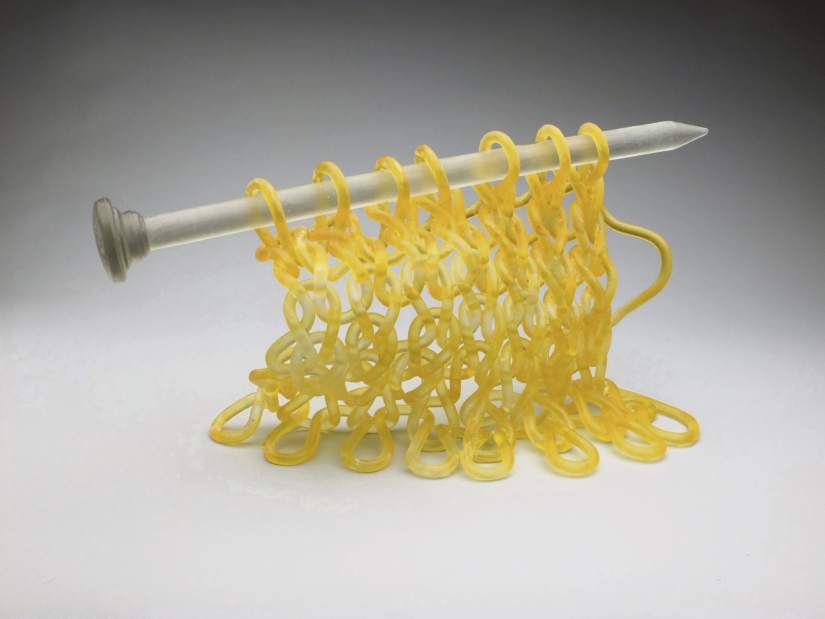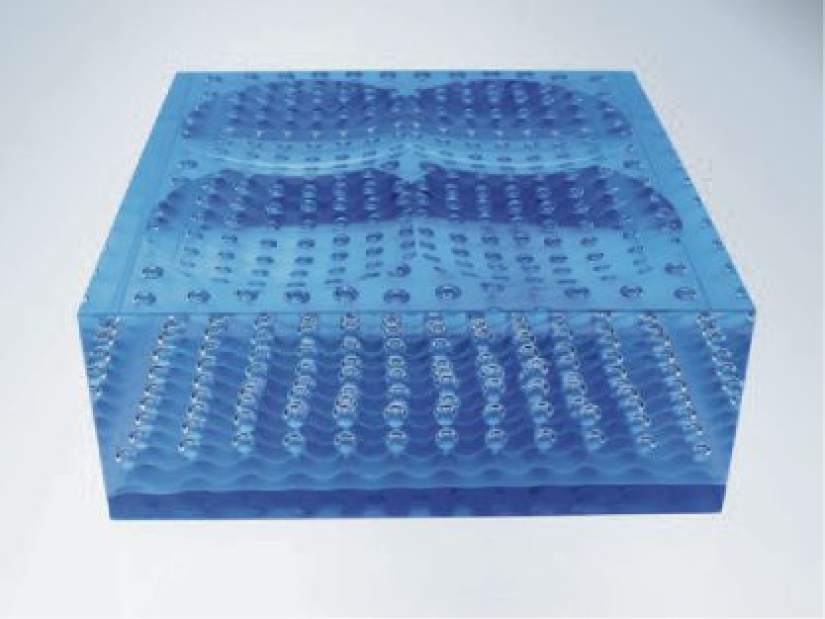Shadyside glass exhibit hails art within art
Featuring the work of eight glass artists from across the country, as well as Canada, the exhibit “Bound by Glass” at Morgan Contemporary Glass Gallery in Shadyside shows the wonderful results that can arise when other aspects of art-making are applied to studio glass.
For example, Owen Johnson of Toronto says he thinks of his kiln-formed works as paintings, even though they are executed in glass. “Abstract painting has, in a way, taken the place of decoration, so why not play with decorative pattern in abstract images,” he says.
That's why his four works on display, all of which are untitled, read better as two-dimensional compositions of colorful patterns as opposed to three-dimensional objects.
“I have always loved and created patterns; they are a neglected art form all of their own,” Johnson says. “I'm drawn to patterns that I can play with and reimagine, patterns that have rich histories and the fingerprints of others all over them.”
The paisley pattern, which is the focus of each work in this exhibit, is a favorite of Johnson. “It's been played with by so many generations and cultures, but it's never been in glass before,” he says.
“I'm just trying to free the pattern up a little, to use it loosely and inventively,” Johnson says. “I'm hoping that someone who might've thought of paisley as something appearing on their grandmother's scarf can now see it as something more sensual and meaningful.”
Fiber art inspires the work of Carol Milne of Seattle. In all of her works on display, Milne combines her love of fiber art, textiles, sculpture and glass to make knitted works in glass, such as her piece “Continuous,” which looks like an oversized knitting needle being threaded through yellow yarn, even though it is entirely made of glass.
“I fuse three things I love — knitting, sculpture and glass — into one,” says Milne, whose favorite pieces among her own works feature actual knitting in progress, as with “Continuous,” paying homage to the process of creating — and celebrating the act of making — instead of the finished project.
“I love the irony here, since this work is, of course, a work in progress and a finished product simultaneously,” she says.
Then there's the work of Weston Lambert, who lives and works in New Orleans.
With the precision of a lapidary, Lambert combines highly polished, pre-existing stones with cut and polished glass — sometimes to the point where one can't tell when one material ends and another begins. As is the case with one of his untitled works on display that looks like a solid piece of malachite, but it actually combines that vibrant green stone with translucent green glass.
“By using pre-existing stones, I am freed from the harrowing choices of a blank slate,” the artist says. “Carving the glass and stone is fluid and intuitive, but passive.”
Working with intuition takes fortitude. Easily, one-third of Lambert's pieces are rejected partway through the process.
“Though I always push my materials to the brink of destruction, after 14 years of this work, I know the materials very intimately and how they will react to my handling of them,” he says.
Lambert says he enjoys combining disparate materials into a unified whole. Before each piece is completed, it gets cut, glued, carved and then polished.
“If pieces break in the process, they get recycled or simply abandoned,” he says. “My approach to relationships (metaphorically speaking), for better or worse, is fairly similar.”
Then there are the pieces in this show that are pure explorations of the medium of glass.
Philadelphia-based artist Jon Goldberg says a lot of his inspiration in the creation of his globular translucent sculptures comes from the material itself.
“Glass bends light. It can be given almost any color and transparency,” he says. “My work is solid, containing an interior space. Within that space, I create layers of color and abstract forms. As you move a piece, your experience of that piece will change because of the unique properties of glass.”
Such is the case with “Optical Shell #2” in which a magenta orb submerged in clear glass seemingly bends and twists as one walks around the piece.
Exploring the prismatic effect of crystal, Steven Weinberg of Warren, R.I., creates pieces that have a magical quality all their own. Such is the case with, “Blue Clover,” a clear glass block of optical quality crystal that contains a grid formation of oxide-formed bubbles that float above a bed of wavy blue glass.
“The pursuit is to create work that transcends the reality,” Weinberg says in explanation of his motivation. “I create light refraction that multiplies and distorts in an attempt to defy the reality for the viewer — an illusory longing to describe the vastness and mystery of time and space that we can't hope to comprehend, the magic. My best attempts, I think — I hope — come close to capturing this ultimately human condition.”
Kurt Shaw is the Tribune-Review art critic. Reach him at tribliving@tribweb.com.



